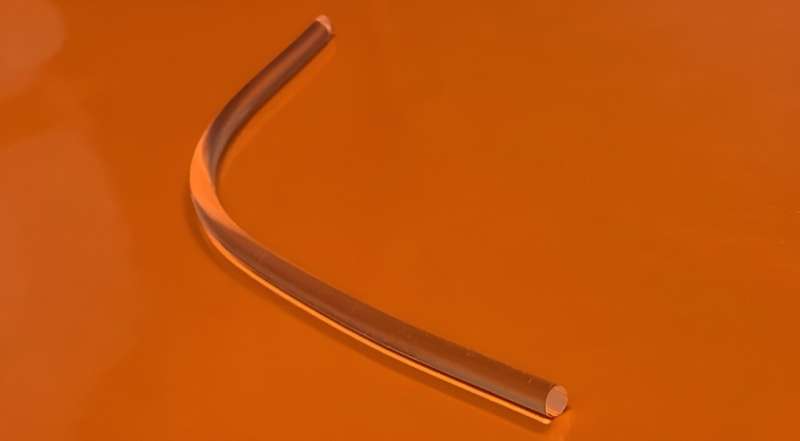This article has been reviewed according to Science X's editorial process and policies. Editors have highlighted the following attributes while ensuring the content's credibility:
fact-checked
peer-reviewed publication
trusted source
proofread
Researchers develop biodegradable optical fiber to measure or modulate electrical current in the body

Electrical signals control a vast number of activities in the human body, from exchanges of messages between brain neurons and stimulation of the heart muscle to the impulses that enable hands and feet to move, among many other examples. To monitor or modulate these signals for medical purposes, a biocompatible and biodegradable optical fiber based on agar, a substance extracted from Gracilaria seaweed, has just been developed.
The research was led by Eric Fujiwara, a professor at the State University of Campinas's School of Mechanical Engineering (FEM-UNICAMP) in São Paulo state, Brazil; Cristiano Monteiro de Barros Cordeiro at the Gleb Wataghin Institute of Physics (IFGW-UNICAMP); and Hiromasa Oku at Gunma University in Japan. An article about it is published in Scientific Reports.
"Biocompatible devices are indispensable when fiber optics is used in medical applications such as monitoring of vitals, phototherapy or optogenetics [a method of controlling and monitoring specific cells by combining optics, genetics and bioengineering], among others. Optical fibers made of biodegradable materials are also an alternative to existing telecommunications technologies based on glass or plastic fibers," Fujiwara said.
The novel optical fiber was produced from agar, a natural gelatin obtained from red algae. It is transparent, flexible, edible and renewable. The same researchers had previously developed an agar-based biocompatible optical fiber as a sensor to monitor chemical concentration and humidity.
"The production process consists basically of filling cylindrical molds with agar solutions. Our latest research expands the range of applications, proposing a novel type of optical sensor that leverages agar's electrical conductivity," Fujiwara explained.
When the fiber is excited by coherent light, it produces granular light patterns that evolve spatially and temporally. As the electrical currents present in the medium traverse the fiber, they modulate the agar's refraction index and create disturbances in the granular patterns, which are known as speckles.
"Analysis of these disturbances enables us to determine the magnitude and direction of the electrical stimuli with reliable measurements for currents equal to or even smaller than 100 microamperes [μA]," Fujiwara said.
The ability to detect electrical signals as subtle as these could be essential to possible biomedical applications. "The fiber could be used in sensor systems to monitor bioelectrical stimuli produced in the brain or muscles, serving as a biodegradable alternative to conventional electrodes. In this case, the optical signals could be decoded to diagnose disturbances. Another possibility would be to use the fiber as an ancillary interface in human-computer connections for assistive or rehabilitation technologies," Fujiwara said.
The sensor's response can be enhanced by adjusting the chemical composition of the material, and agar's moldability into various geometries means it can be used to make lenses and other optical devices with sensitivity to electrical current. The most important advantage is that the fiber can be absorbed by the organism after use, avoiding the need for additional surgical interventions.
This is still bench research, Fujiwara stressed, and technological applications are a long way off, but rigorous determination of the physical parameters of the optical response to electrical current lays a sound foundation for future fabrication of biomedical devices using the fiber.
More information: Eric Fujiwara et al, Agar-based optical sensors for electric current measurements, Scientific Reports (2023). DOI: 10.1038/s41598-023-40749-7
Journal information: Scientific Reports
Provided by FAPESP




















